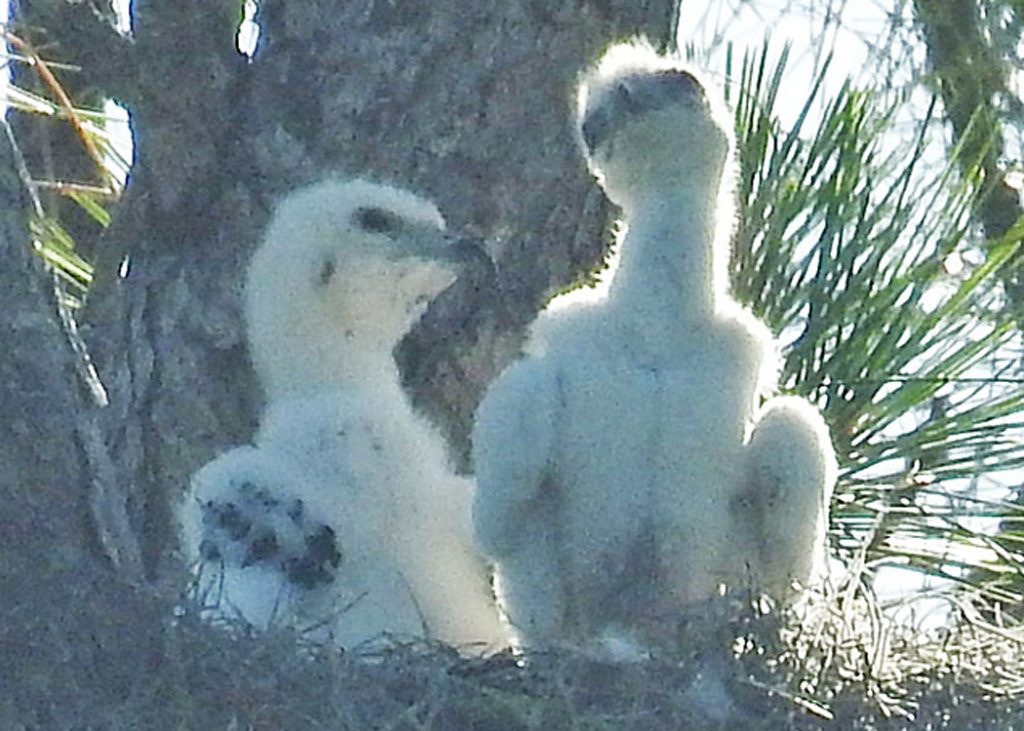
by Julie Motkowicz, CREW Trust Education Coordinator
Have you heard the news?
CREW Flint Pen Strand recently experienced several days of wildfire. While CREW agencies conduct intentional prescribed burns all the time at Flint Pen, this fire was treated differently because of how it started. Read through these frequently asked Q&A to discover the facts about our recent wildfire and fire ecology of Southwest Florida.
What happened?
On Saturday, 3/26/22, local residents reported an active wildfire at CREW Flint Pen Strand in Bonita Springs. The fire began in northern Flint Pen outside of the hikable area, but spread to other areas within the preserve, including several of the CREW trails. The fire ultimately burned in three separate sections and was monitored over the following weeks. The Florida Forest Service and Bonita Springs Fire Department immediately responded with wildfire control measures. The South Florida Water Management (SFWMD) and Florida Fish and Wildlife Conservation Commission (FWC) aided the situation.
How big was the fire?
The fire burned approximately 190 acres, a majority of which occurred beyond the trails in northern areas of CREW Flint Pen Strand.
How was the fire stopped?
The Florida Forest Service used plows to create “fire breaks”. Fire breaks clear vegetation so that fire will no longer have “fuels” to burn and therefore extinguish itself. Natural fire breaks include bodies of water and even hiking trails.
How has the fire affected Flint Pen Strand?
The fire has visually changed the floral landscape of many areas of CREW Flint Pen Strand. For example, on parts of the Red Trail the understory of grasses and shrubs have been cleared, opening up lots of space for new growth. The fire breaks have created new open clearings on and around the trails that will take time to regrow.
Are the trails still hike-able?
Yes, but some of the trails were affected by the fire breaks and are very bumpy and sandy with plant debris that may overlap the trails. Be sure to watch your step and closely follow the trail markers such as flagging, tree markers, and wooden posts.
What is being done post-fire?
The plants and animals will quickly bounce back from the fire. CREW agencies are working to minimize the impacts of the fire breaks by flattening them and removing debris. CREW Trust staff are working to provide educational opportunities as the fire has created a unique hiking experience!
Is fire bad?
Fire is good! Our ecosystems in SWFL are dependent on fire. For example, most of CREW Flint Pen Strand is considered pine flatwoods. A pine flatwood is a type of ecosystem that needs a fire every 3-5 years to maintain its plants and animals. Fire returns nutrients to the soil, maintains understory plants for animals like birds and gopher tortoises, opens up new space for plants to grow, and overall is the “checks and balances” for many ecosystems. Frequent small fires prevent large, destructive fires, which is why our Land Managers practice “prescribed fire”. Unfortunately, wildfires can help the spread of invasive species of plants. Land managers and CREW Trust volunteers will closely monitor invasive species encroachment to prevent their spread.
What do animals do during fire?
Most larger animals like deer, bear, and panthers will simply move away from fire, while birds can easily fly away. Smaller animals like snakes, rabbits, and mice will seek shelter underground, usually in gopher tortoise burrows.
Are all the plants dead?
Some native plants may have died, but most of them will come back better than ever! Think of fire as a big haircut, promoting new, healthy growth. Just give them a few short months and you’ll see a lot of verdant changes. This is a great time to go hiking and observe how fire impacts our landscape!
What is the difference between a wildfire and a prescribed burn?
A prescribed burn is a fire that is intentionally set in specific conditions by fire professionals. At CREW, prescribed fires are conducted by SFWMD and FWC. A wildfire is a fire that either begins naturally (by a lightning bolt) or by accidental or intentional arson. An unplanned fire may affect nearby buildings, become large and destructive to plants/animals, and pose a threat to humans.
What can I do to help?
Always report illegal activity such as arson, UTV/ATV use, drones, unpermitted vehicles, unpermitted camping, etc. to any of the following: 911, the local non emergency number (239-477-1000 Lee, 239-252-9300 Collier), or the FWC hotline (888-404-3922). The CREW Trust staff and SFWMD staff do not respond to reports of illegal activities, so please direct your reports to the appropriate agency previously listed.
Support the CREW Trust’s mission by spreading the word about us or donating to us (www.crewtrust.org/donate). Environmental education is the best defense against preventable environmental destruction so please support our efforts to inform and engage with the community.
Will there be educational opportunities regarding fire?
Yes! Please join us for an interpretive hike along the affected trails at Flint Pen Strand for a unique experience post-fire. Observe the response of plants and animals displaying their resiliency to and dependence on fire.

May 4th, 2022 at CREW Flint Pen Strand Trail: In the Footsteps of Fire – Hike in the footsteps of fire to see a miraculous rebound of the Flint Pen Strand landscapes as flora and fauna return to the crispy trails. Register here – https://footstepsoffire.eventbrite.com






























































